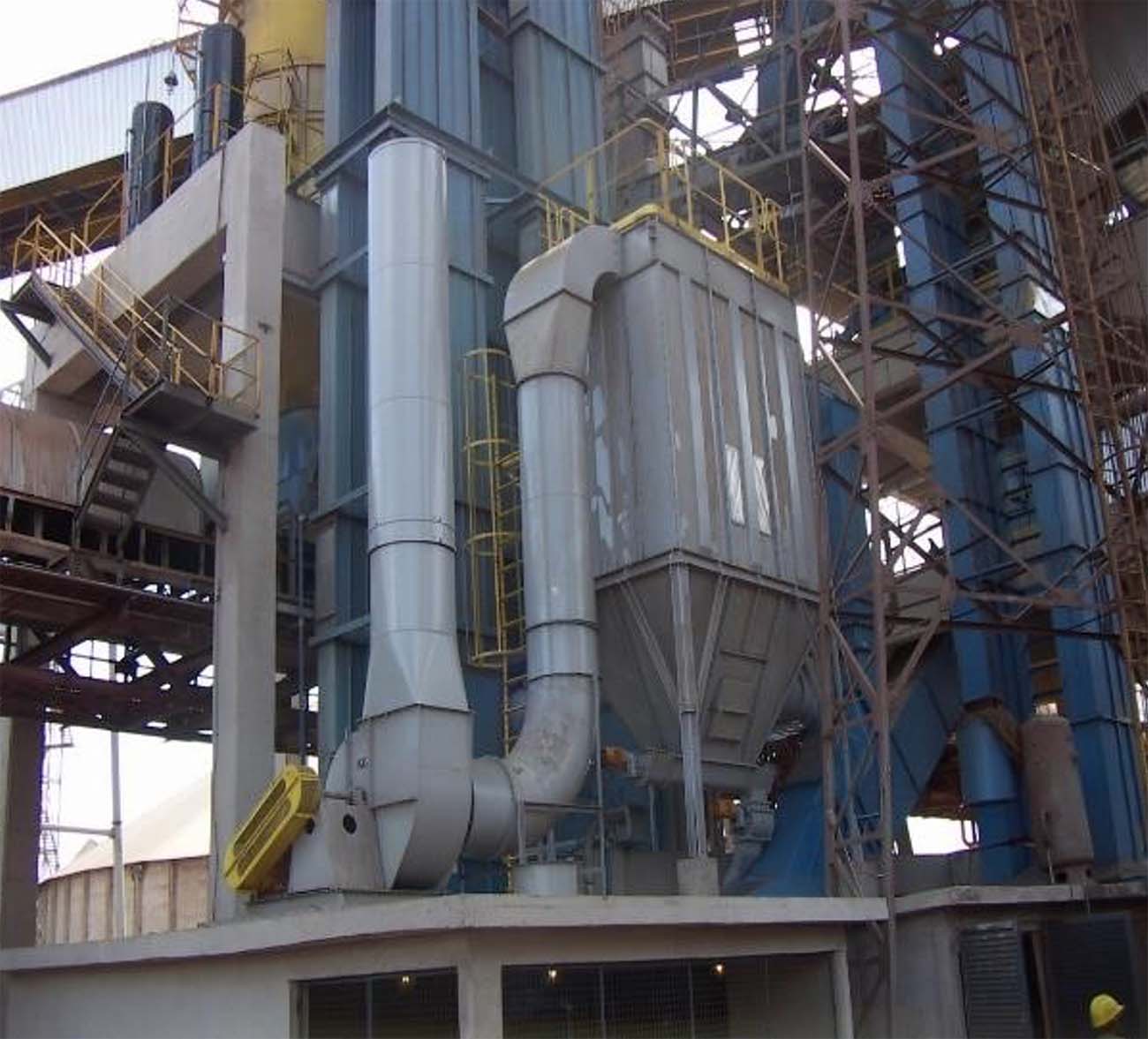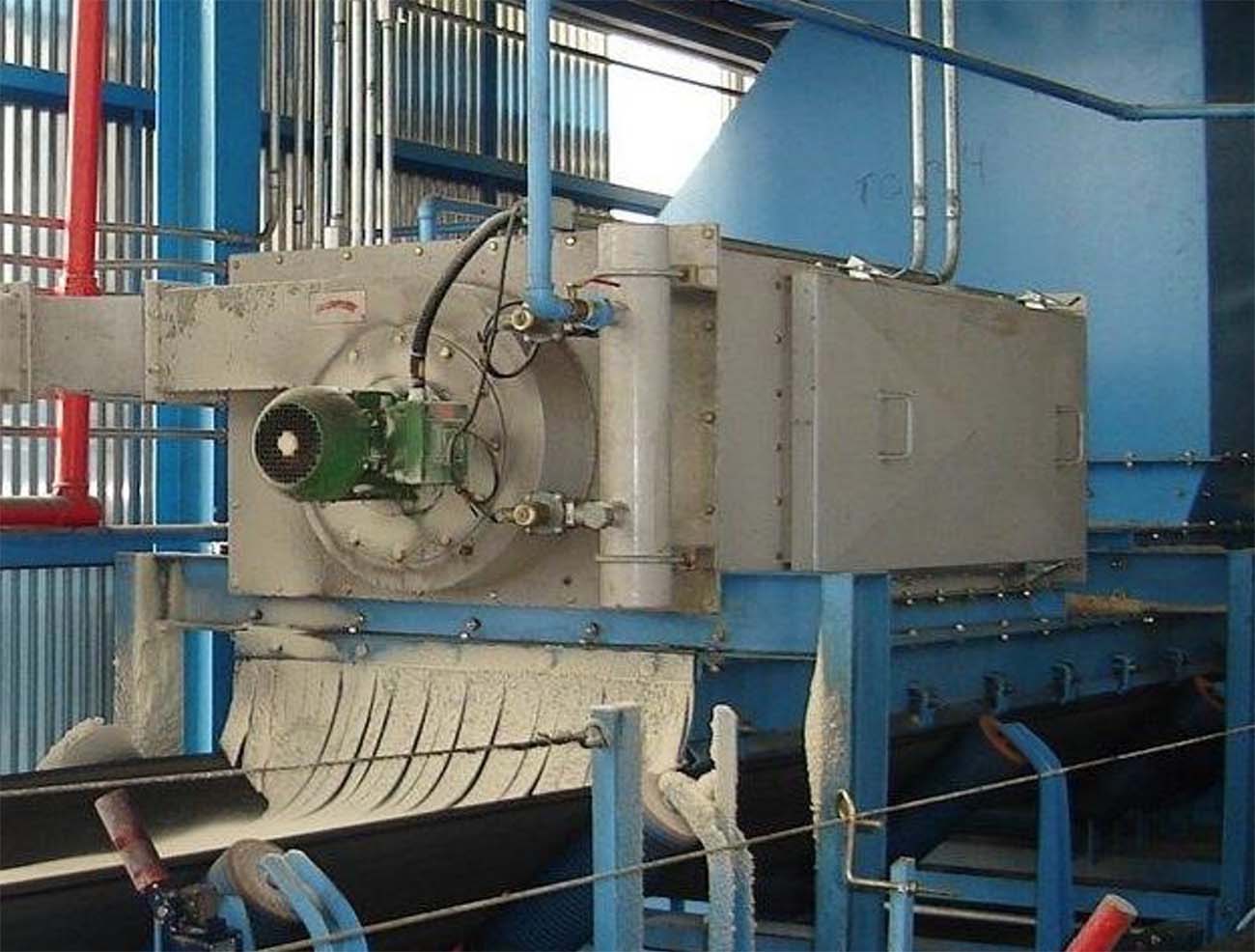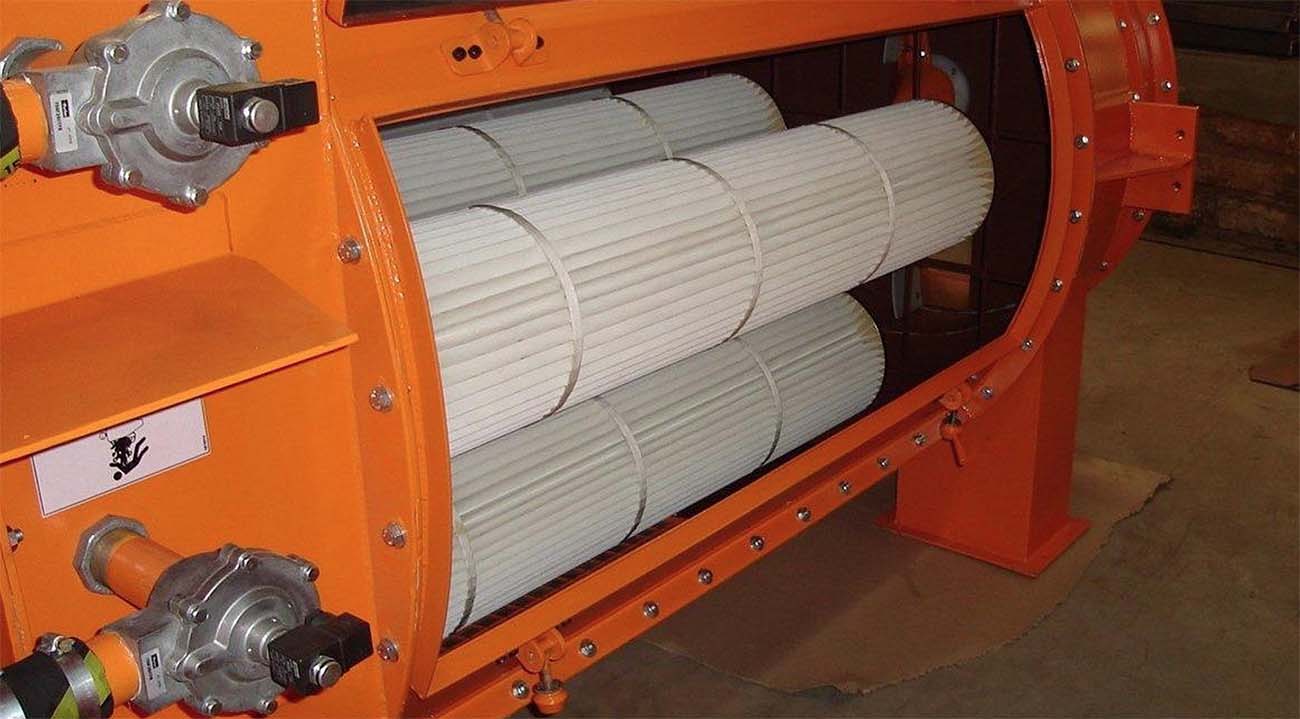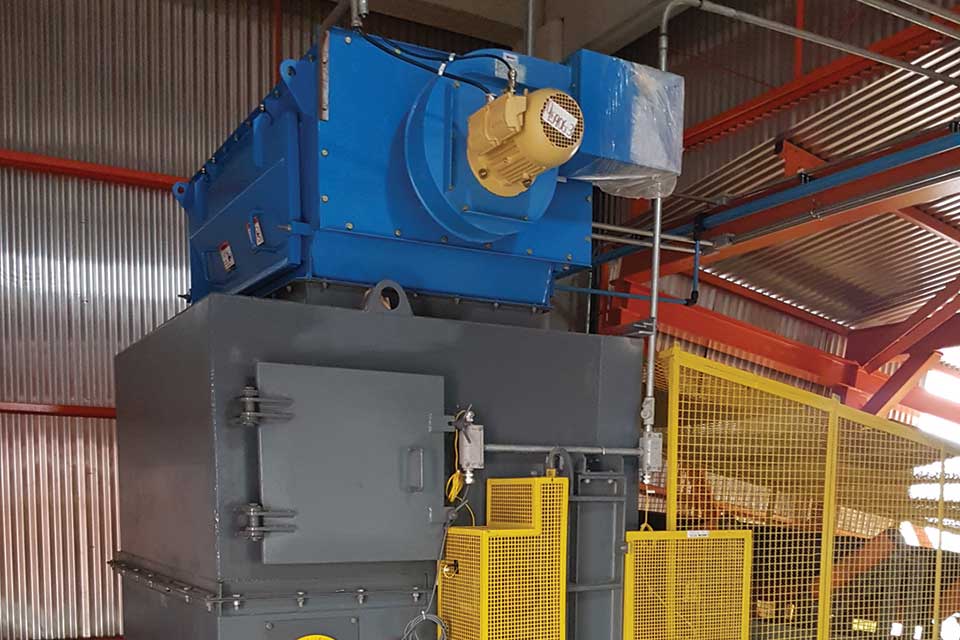TMSA Bag Filters
The control of environmental pollution represents, nowadays, a great concern in several market segments, mainly in industrial processes that generate dust, whether in handling or in production operations. This dust, when emitted to the atmosphere in a disorderly way and in great concentration, harms the health of workers, accelerates the wear of equipment and can cause serious damage to the manufacturing plant. Dust control is even more essential in the food, fertilizer and mining sectors in ports, especially in those units that receive, unload and store products with low humidity and in bulk, since with favorable conditions and factors, they can cause fires and explosions.

Explosion in installation in corn handling.
Even with the increased awareness of the problems related to pollution and strict regulations, unfortunately environmental issues have not occupied their due place in the list of concerns of modern society. This fact led TMSA to adopt new and modern engineering approaches with an emphasis on the reduction and control of dust arising from industrial processes. In practice, there is no intention of achieving total air purification (and this is not even possible), but rather of achieving a degree of purity that can significantly mitigate risks to health and the environment.
There is a considerable amount of equipment and technologies to control particulate emissions, both those that separate the particulates wet and dry.
-
Wet-through equipment such as Scrubbers and gas scrubbers, among others, have as a result of the process the transformation of the collected material into sludge, requiring additional resources for decanting and treating effluents and, consequently, requiring greater financial investments.
-
Dry equipment such as cyclones, multicyclones and separation columns have low collection efficiency, especially when the particle size composition of the aspirated stream consists of particles below 10 microns. Thus, these equipment’s are often used as inertial pre-separators and when applied before filters because, in addition to contributing to the collection efficiency of higher density particles, they also increase the useful life of the filter media (cartridges or bags).
-
Electrostatic filters have high separation efficiency; however, they need sophisticated complementary equipment, highly qualified labor with knowledge in electrical power and control, in addition to the investment value being proportionally higher than other solutions.
-
Cartridge and/or bag filters have good efficiency performance coupled with a reasonable cost and meet the requirements of current environmental legislation and are, therefore, the most applied filters in TMSA solutions.


Pulse jet filter model LAC, cleaned using compressed air jets
When it comes to the intake of the aspirated air+powder flow to be treated, bag filters are classified into two groups:
-
Filters with intake air+dust flow from the inside towards the outside of the bags.
-
Filters with the intake of the aspirated air+dust flow from the outside into the bags, where they are structured by wire cages.
The first group is used in small facilities, where the cleaning of the bags is carried out manually and normally with the system stopped and, therefore, it is little applied.
The second group, on the other hand, due to its ease of cleaning without the need to shut down the system and for being equipped with an automatic cleaning system, has been the most applied and used.
The most used cleaning systems are counter-current airflow with cleaning through blowers or medium pressure Roots compressors, and pulse jet cleaning systems with compressed air jets.
TMSA also manufactures circular filters with air flow reversal cleaning, in the cleaning modality by means of blowers, called CRLF. They are filters for continuous cleaning of the bags where the aspirated flow of air+dust enters the filter cylinder laterally and is forced downwards. The denser material is decanted in the hopper itself and the lighter one is carried along with the gas to the bag compartment and is then forced to pass through these, from the outside to the inside, where the particles are retained.
The clean air is then led to the upper filter compartment and admitted by the centrifugal fan, and from there to the atmosphere.
Bag cleaning is done through a reverse flow system, that is, one of the high pressure blowers is installed in the upper filter compartment on a turntable that blows a jet of opposite air into a row of bags that, when combined with induced secondary airflow, it produces a high-intensity reverse jet, releasing accumulated dust on the outside of the bags.
The bags are fixed in cylinder-type cages on the filter mirror, using spring rings for easy removal. At the bottom of the filter, the collected material is removed from the filter hopper through a rotary valve.
As for pulse jet filters with compressed air cleaning, TMSA manufactures three different models:
- LAC filters, of rectangular construction.
- CLAC filters that are circular.
- Compact filters, ideal for installing directly over the dust generation point.
All models have the same operating principle where solids transported by the gaseous medium, by suction or pressure, enter through the bottom of the filter hopper and particles that do not settle, as they are less dense and of smaller granulometry, follow the upward flow towards the outer surface of the filtering bags.
In this way, the suspended solids are retained on the outside of the bags and the clean gases go to the upper plenum, being admitted by the fan and expelled to the atmosphere.
An electronic programmer with features for regulation, both in period and in frequency, periodically energizes a row of solenoid valves which, in turn, acts on the diaphragm valves, thus allowing the passage of a jet of compressed air from the barrel to the blowing tubes, which inject high pressure air inside the sleeves which, combined with the induced secondary air flow, produces an increase of pressure and a high intensity shock wave in the sleeves, giving off the dust.
The powder, now agglomerated, is detached from the bags and falls by gravity to the bottom of the filter hopper, from where it is removed by means of a conveyor screw, rotary valve, or both.
All pulse jet filters are made up of an upper plenum, where the cleaning of the bags is processed and where the barrel and solenoid valves are located, as in the compressed air distribution tubes. The filter's clean air outlet is also located in this place.In the middle part there is a compartment where the bags, venturis and cages are installed and, finally, the lower hopper, where the gases/particulates enter and the material collected by the filtering bags exits.
Filtering bags in equipment intended for dry filtration are, without a doubt, one of the most important parts of the equipment.
The market has a multitude of fabrics manufactured to meet the most varied types of particulates in industrial processes.
One of the aspects to consider when selecting a certain type of filter media is the knowledge of the nature of the fiber that makes up the fabric. There are several features or operating factors that condition the application of one fiber or another. The effects of these factors cannot be considered in isolation, but together, since an isolated factor can harm or compromise the whole set.


Circular pulse jet filters, model CLAC, cleaned using compressed air jets.
-
Cotton, for example, operates with maximum temperatures of 90℃ and in dry, chemically alkaline environments.
-
Wool must be used for slightly acidic suctions.
-
Polypropylene is very chemically resistant and is most commonly used for hygroscopic solid particles.
-
Polyamide is affected by the combination of humidity and temperature.
For high temperatures, up to 200℃ in dry environments with little chemical aggressiveness, the recommendation is to use Nomex bags, however, most suction systems use polyester fibers as bag filters.
- Polyester is the most mechanically resistant fiber, its operating temperature can reach up to 140℃ , it is resistant to most chemical agents, including acids, however, it loses its properties against the moisture-temperature-acidity combination, as it hydrolyses.
In addition to the bags, the electronic programmer is of utmost importance in a bag filter with cleaning by means of compressed air jets, as it is the element responsible for controlling the cleaning system, that is, it is through it that the frequency and duration of the bag cleaning cycle by means of electrical impulses.
The column manometer is the element responsible for checking the functioning of the entire set. It must be installed between the upper plenum and the bag compartment. Its purpose is to check the pressure drop between these two compartments, thus determining the cleanliness of the filtering bags.
In addition to all of the above, there are basically two types of filter configurations:
-
Filters with bag removal from the side (which are often used when there is no ceiling height in place to allow removal of the bags from above).
-
Filters with removal of the bags from the top (when they are removed by the upper plenum, where there are access doors for this purpose).
The main advantage of the second configuration is that it is not necessary for personnel to enter the interior of the filter for placement and/or replacement of the bags, being, therefore, a cleaner and easier operation than filters with lateral removal of the bags. However, this filter requires a ceiling height than conventional filters.
In pulse jet filters with bag cleaning using compressed air jets, some recommendations are very important, such as installing a pressure regulating safety valve in the compressed air line.
It is also recommended, when the filter is installed outdoors and with temperatures above 90℃, that it has thermal insulation, thus avoiding the risk of condensation. The same recommendation is suggested when working with the sugar input. In this case, it is best to install the filter in a confined area so that the sugar does not turn into molasses.
With regard to safety, it is essential to install pressure relief doors and explosion-proof windows.
It is also recommended to install a particulate pre-separator when the concentration is above 500 g/m3. Generally speaking, concentrations of up to 15 g/m3 are considered low. In the range between 15 and 400 g/m3 are considered averages. Above 500 g/m3 are considered high concentrations and there may be premature clogging of the bags.
Finally, it must be taken into account whether the particles are capable of electrostatically charging themselves with a signal contrary to the textile material. If there is a possibility of occurrence of this phenomenon, bags that allow a discharge to earth must be used.


Compact filters model FC with bag cleaning using compressed air jets.
As an alternative to central suctions systems, there are compact cartridge filters, ideal for placing in silos, changing belts, chutes, scales and other dust emanating points where necessary or where it is impossible to place central suction systems.
The great advantage of this equipment is the suction of the pollutant and the discharge to be performed directly at the point of dust generation, making it unnecessary to use other remote equipment such as central filters, fans and the pipes connecting long distances. The reduced dimensions of the compact filters are achieved due to the placement of high-performance pleated polyester cartridges, which replace several conventional bags, as shown in the photo below.

Polyester bags on compact filters.



